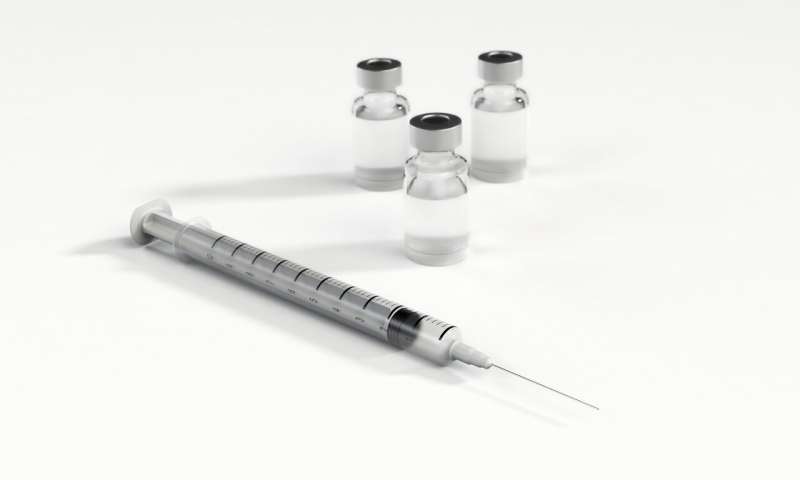This is how the new COVID-19 vaccine works

"What is new about this vaccine is that it works using genetic code," says Research Scientist Sven Even Borgos at SINTEF. "This means that the vaccine instructs the body to make small and accurately selected components of the virus. The recipient then develops antibodies against the virus that causes COVID-19," he explains.
Borgos is leading SINTEF's strategic efforts in the field of medical mRNA technology, and has high expectations that the vaccine will be very effective.
But what is mRNA?
The letters mRNA stand for "messenger ribonucleic acid," which plays an important role in our bodies' life processes. It can also be described as a "working copy" or our DNA.
mRNA is made up of four nucleic acids, abbreviated and represented by the letters A, U, C and G. When they make proteins, our cells read the order of these nucleic acids just like a recipe.
The idea behind using mRNA to make drugs is based on providing the body with a synthetically-manufactured working copy of our DNA, or another code that we want to read, so that the body itself can go on to make vital proteins that the body lacks, where this deficiency is causing disease.
"The reason that mRNA-based drugs have the potential to be so effective is that they work in the same way as our own genes," says Borgos. "The technology is relatively new, but is predicted to have a bright future. Recently, SINTEF has been participating with other research centers in a large-scale EU project aimed at using the same approach to develop a drug to combat hereditary breast cancer," he explains.
The use of mRNA has great potential in a number of fields, including the treatment of cardiopulmonary, neurological and metabolic diseases. In these cases, the body is instructed to manufacture proteins that may be defective or lacking. However, the world really started paying serious attention to this approach when it became clear that mRNA is very effective in the manufacture of vaccines, such as that being developed to combat the virus SARS-CoV-2, which causes the disease COVID-19.
The key is in the viral genes
In order to make the synthetic mRNA component, researchers must first obtain the DNA from which the working copy is made, and mix it with an enzyme that can both read the DNA code and then manufacture the working copy.
"This sounds rather technical, but it is in fact one of the most important processes of life on Earth," says Borgos.
As soon as the genetic composition of a new virus has been mapped, we can code its key components to make synthetic mRNA, which we then introduce into the body in the form of a vaccine. In this case, we use it against COVID-19.
The body then uses the instructions coded in the mRNA to make a new protein that is identical to the selected parts of the virus. Our immune system then reacts to these new proteins, but develops its own response without any danger of infection. The body is then ready to combat the virus if and when it becomes infected.
Vaccine development in record time
The advantage of making a vaccine in this way is that the process is very rapid. Traditional vaccine development involves first identifying the virus, or the organism that cause the disease. It is then isolated and made more or less inactive, and subsequently injected into the body in order to stimulate an immune response. This method has worked since as long ago as the 1700s when the first smallpox vaccine was developed. However, the method is time-consuming and may take up to ten years, including vaccine testing.
Making fully synthetic mRNA vaccines enables us to achieve our goal much more rapidly. Pfizer and BioNTech have now demonstrated how this can be achieved in practice. Among our challenges are to find out if it works equally as well on all humans, if it provides lasting immunity, and to ensure that it is distributed to enough people. A particular challenge is that in order to remain active, this vaccine must be stored at -70 degrees Celsius.
What about COVID in mink?
Many people will have heard that mink have been infected by a corona virus on farms in Denmark. This is not entirely unexpected since the mammalian family to which the mink belongs is especially susceptible to infection by respiratory viruses transmitted by humans. At first, the Danish authorities wanted to destroy all farmed mink, and to place all those that had been in contact with the infected animals in self-isolation.
It is assumed that the mink have been infected by humans carrying COVID-19, and have subsequently infected other humans. However, while inhabiting "interim carriers" such as mink, the virus could be able to mutate much more rapidly, and in other ways, than it does in the human population. So, in a worst case scenario, variants of the virus will develop that will be untreatable using the vaccines that we are currently developing.
Light at the end of the tunnel
"After almost a whole year of COVID-19 ravaging the world, its impact has already been enormous," says Borgos. "Pfizer and BioNTech are reporting 90% efficacy using their mRNA-based vaccine. This result is much better than most people dared hope, and it helps to boost our faith in the other mRNA vaccines that are currently under development. So, even though we still have some testing to do, there is good reason to be optimistic. If the vaccine is a success, we can say that researchers and the pharmaceutical industry have jointly shown the capacity to deliver new and advanced technology on a scale, and at a speed, that we have never experienced before."





















